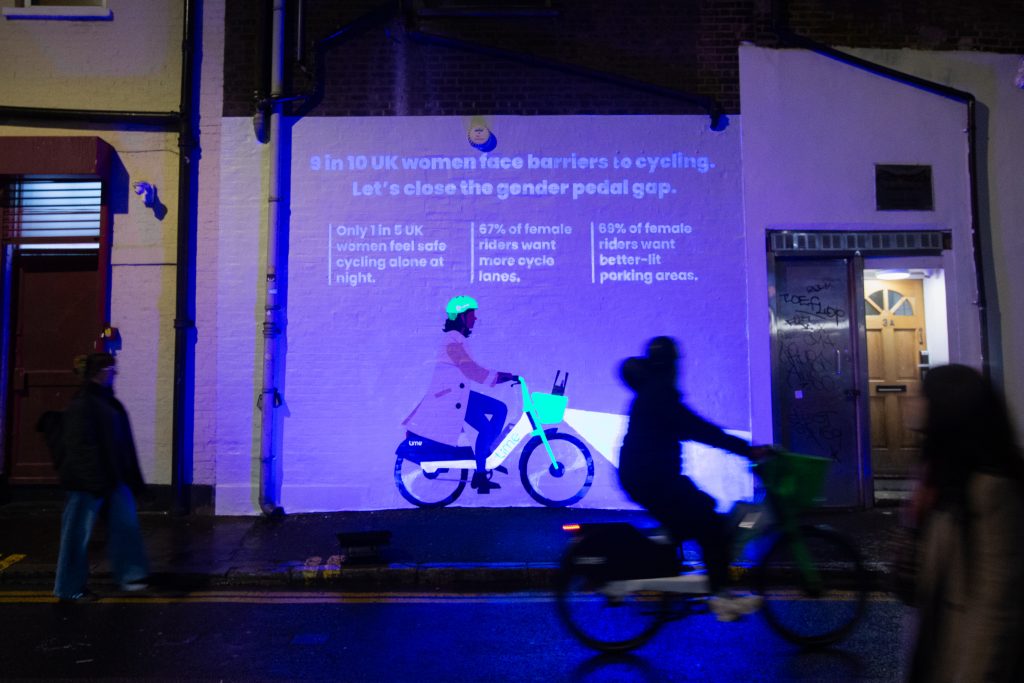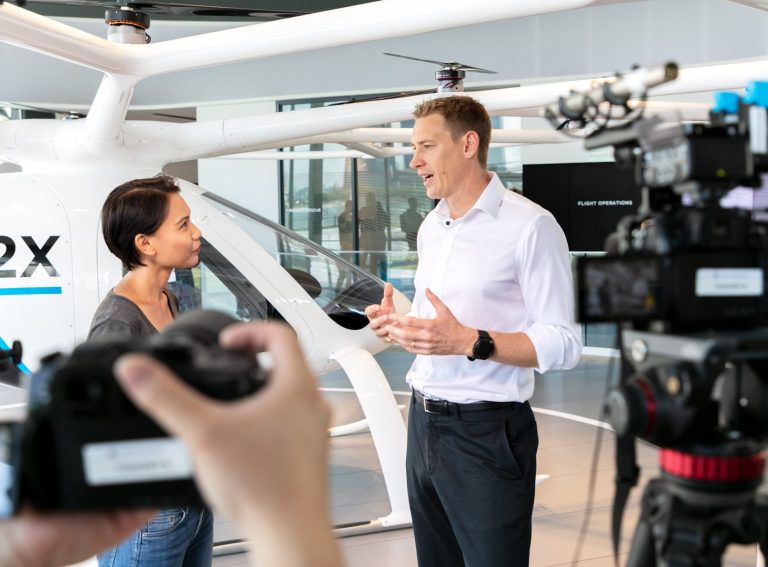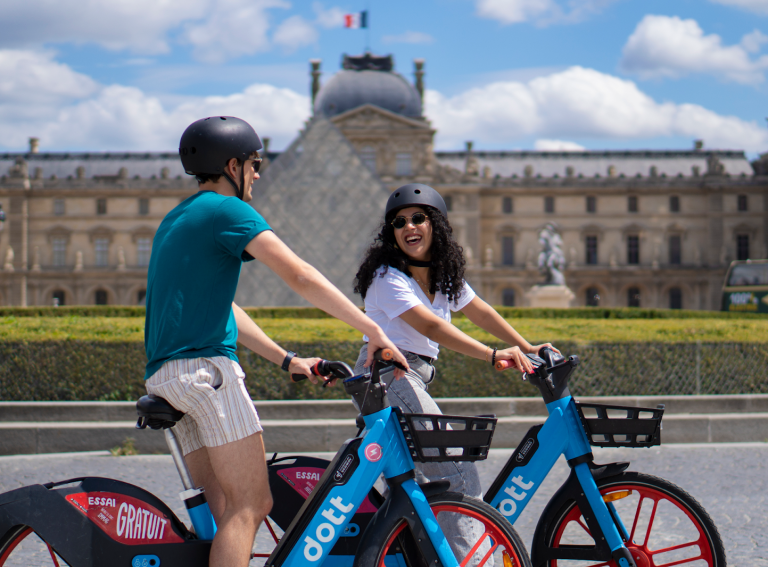By Zag industry expert Vivian Myrtetus & Partner at Converge Transport
When shared scooters first burst on the scene in 2017, no one could have predicted the ups and downs the shared mobility industry would go through. Initially, Silicon Valley displayed strong enthusiasm for the emergence of the two-wheeled devices, channelling significant investments into numerous startups focusing on the field.
Over the years, several companies have come and gone, but Lime has weathered the storm and, earlier this year, reported gross bookings of $250 million in the first half of 2023, a 45% increase over the same period last year.
Lime has been making significant investments toward a more environmentally and fiscally sustainable future. Andrew Savage, Lime’s VP and Head of Sustainability, who was also on the Founding team, shares insights during an interview with Zag Daily, shedding light on the company’s impactful journey and its mission to transform city mobility.
Lime’s Global Impact
Savage unveiled staggering statistics that highlight Lime’s impact on global transportation. After seven years of operation, the company recently announced a significant milestone. Having completed 500 million Lime rides, the company has effectively substituted around 125 million car trips, notably easing the congestion on city streets.
He remarked, “There is a cumulative impact over the course of these 500 million trips that end up on the aggregate having an enormous impact. For our biggest markets in the world, it is hundreds of thousands, if not millions, of car trips prevented over the last several years. These rides have played a pivotal role in avoiding approximately 50,000 metric tons of carbon emissions, improving air quality across 300 cities and 30 countries spanning five continents.”
A recent study conducted by Fraunhofer ISI, a prominent German research institute, reveals the positive impact of shared e-scooters on decreasing carbon emissions in urban transportation networks. The study’s findings indicate that Lime’s shared e-scooters and e-bikes contribute to a net reduction in carbon emissions compared to the emissions they generate. Over Lime’s five years of operating shared e-scooters and e-bikes, the company has continuously enhanced its lifecycle emissions, resulting in an impressive 84% decrease in CO2 emissions per kilometre travelled per passenger.
Pioneering Sustainable Practices
Lime’s commitment to shared, affordable, and carbon-free transportation is a driver and core value for the company. Savage says the company decided to design and develop its own scooter years ago despite the high cost. While its competitors favoured off-the-shelf Chinese-manufactured devices, Lime invested in a hardware team which Savage believes was an important step in the company’s history.
“We invested in a hardware team, and we invested in the Gen Four design with the swappable battery model. I think hands down, that was the most important decision the company has made to date. It has yielded ridership, it has yielded sustainability benefits, it has yielded unit economics and lifespan improvements. All the things that came with that investment were mission-critical and became business-critical in the long run.”
Savage also elaborated on Lime’s 2022 carbon inventory report, which revealed a notable reduction of 37% in the company’s carbon impact per kilometre/mile provided despite substantial expansions and investments from 2019 to 2022.
Lime has been focused on decarbonising the company, with a goal to reach net zero carbon emissions by 2030.
It is the first company to set a science-based carbon target in line with the Paris Climate Accords across Scopes 1, 2 and 3 emissions, through one of the leading corporate target-setting organisations in the world, the Science-based Targets Initiative.
Savage shared exclusively with Zag Daily that the company just had its net-zero target validated by the Science-Based Targets Initiative as well, doubling down on its decarbonisation efforts and being the first in the industry to reach that threshold and milestone.
The company has long been committed to sustainable efforts and in 2020, when Lime committed to transitioning to an all-electric operations fleet as part of the Climate Group’s EV100, it had fewer than 10 EVs. Earlier this year, Lime surpassed 50% of its global operations vehicles being electric, operating more than 150 electric vehicles.
Just last month, Lime announced it had begun to source e-cargo trikes from US-based manufacturer Coaster Cycles. These vehicles have been launched in ten cities across the US and Canada, adding to its existing e-cargo trike fleet in Europe.
“One of our goals is reducing the operational impacts of providing the service – that is core to the mission, and it is also good economics,” stated Savage, emphasising Lime’s commitment to sustainability.
“With the implementation of the swappable battery, Lime has expanded the use of e-cargo trikes because they are perfect for swapping batteries because of their size, and that is most of what we do now for operations. Across Europe, we have had these various forms of trikes for the same purpose, and it’s just a great way of navigating more congested and highly dense areas.”
These vehicles are used to manage Lime’s fleet, assisting in essential tasks such as swapping batteries, deploying vehicles, maintaining balance within the fleet, and collecting vehicles for repairs.
Commitment to Customers
Savage also credits data-driven decisions to the company’s growth over the years. In addition to its sustainability efforts, Lime attributes much of its success to its dedication to customers. The company actively leverages customer insights and community feedback to improve its service and expand its offerings.
To appeal to a broader user base, the company recently announced the expansion of its fleet to include a seated scooter. Internal research and community feedback led to the introduction of the new vehicle which includes a storage compartment, padded seat, and large wheels for a smooth ride.
Lime’s research revealed that the new vehicle resonated more with older riders, women riders, and those with limited mobility compared to its conventional e-bike and e-scooter offerings. Historically, ridership numbers have indicated that men are more likely to use shared devices than women, and Lime has proactively set out to narrow the gap.
A recently released Women’s Night Safety report by Lime found that 9 in 10 women, or 91%, face barriers to cycling in the UK.
The data revealed a significant gender ‘pedal gap’ with women in the UK cycling almost half as much as men every month as a result. Savage said the company has developed several recommendations to improve cycling conditions for women.

Savage added, “We have several avenues to bridge the ‘pedal gap’ alongside our city and community partners. It’s crucial to prioritise integrating with public transport, emphasising the introduction of additional cycle lanes and ensuring proper street lighting along frequently used cycling routes and parking areas.
“Transport and mapping applications should include features displaying well-lit pathways tailored for cycling and walking, particularly catering to women travelling during nighttime hours.”
One of the innovative initiatives being explored by Lime is the ‘Follow My Ride’ feature that will enable riders to share their route with family or friends, providing greater personal safety.
What is ahead for Lime?
In the dynamic landscape of shared mobility, Lime has emerged as a resilient frontrunner in the industry. The sustainability initiatives undertaken over the years seem to be yielding multifaceted benefits, significantly impacting the environment, business operations, and the bottom line.
When asked what lies ahead for Lime, Savage commented, “We have come a long way from when vehicles did not last nearly long enough to have a positive environmental benefit. There is a suite of progress that we look forward to executing in 2024 and fully expect to have another growth year as a result. It will be with a laser focus on our cities and our riders and delivering what they expect and what they want.”
He further remarked, “I think we are intensely focused on the rider and understanding what riders want and need from us and, at the same time, intensely focused on our city partners and what cities expect of us. And I think we will be in an incredibly strong position by doing both.”





